Sunday morning, July 17, we got up early, had breakfast, and Zoomed with our Sunday School class at 6:30am Alaska Time! After that, we had some free time in the morning for Linda to finish the last blog and Jim to work on reservations for after the Caravan. We had a light lunch and met up with our group to go on another cruise! This time out of Seward in Resurrection Bay in the Kenai Fjords. We had a little fun with the otter bench as we waited to board the boat. It was drizzly and cold!



And here is our vessel – the Viewfinder!
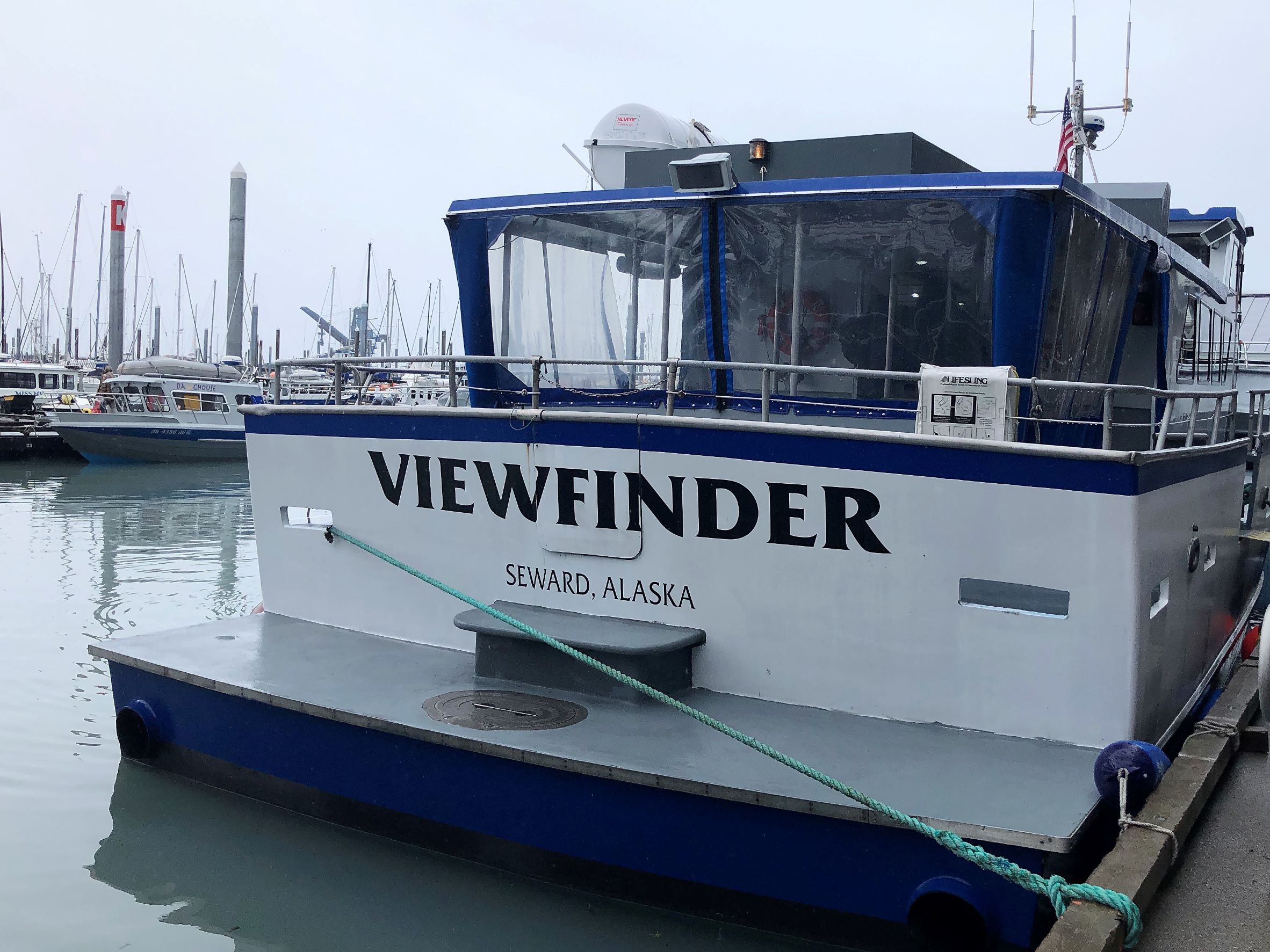
Our route is the red dotted line coming out of Resurrection Bay

Just as we were leaving the marina, we saw a bald eagle!

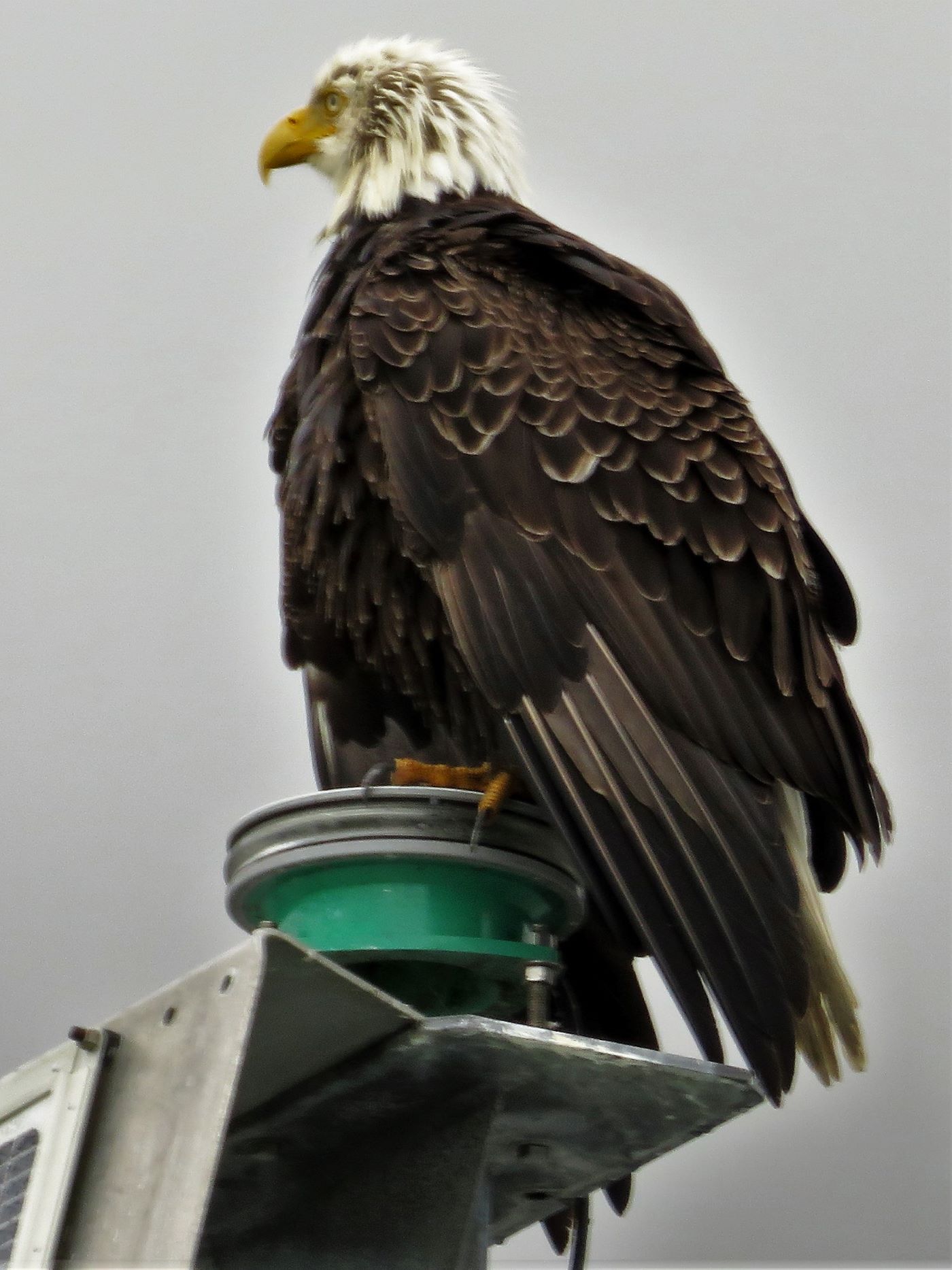
Here’s some of our group on board






A second Bald eagle was spotted! Can you see the white head?

Jim zoomed in for a closer look.

We saw two more sea otters


A trio of glaciers came in to view up in the mountains

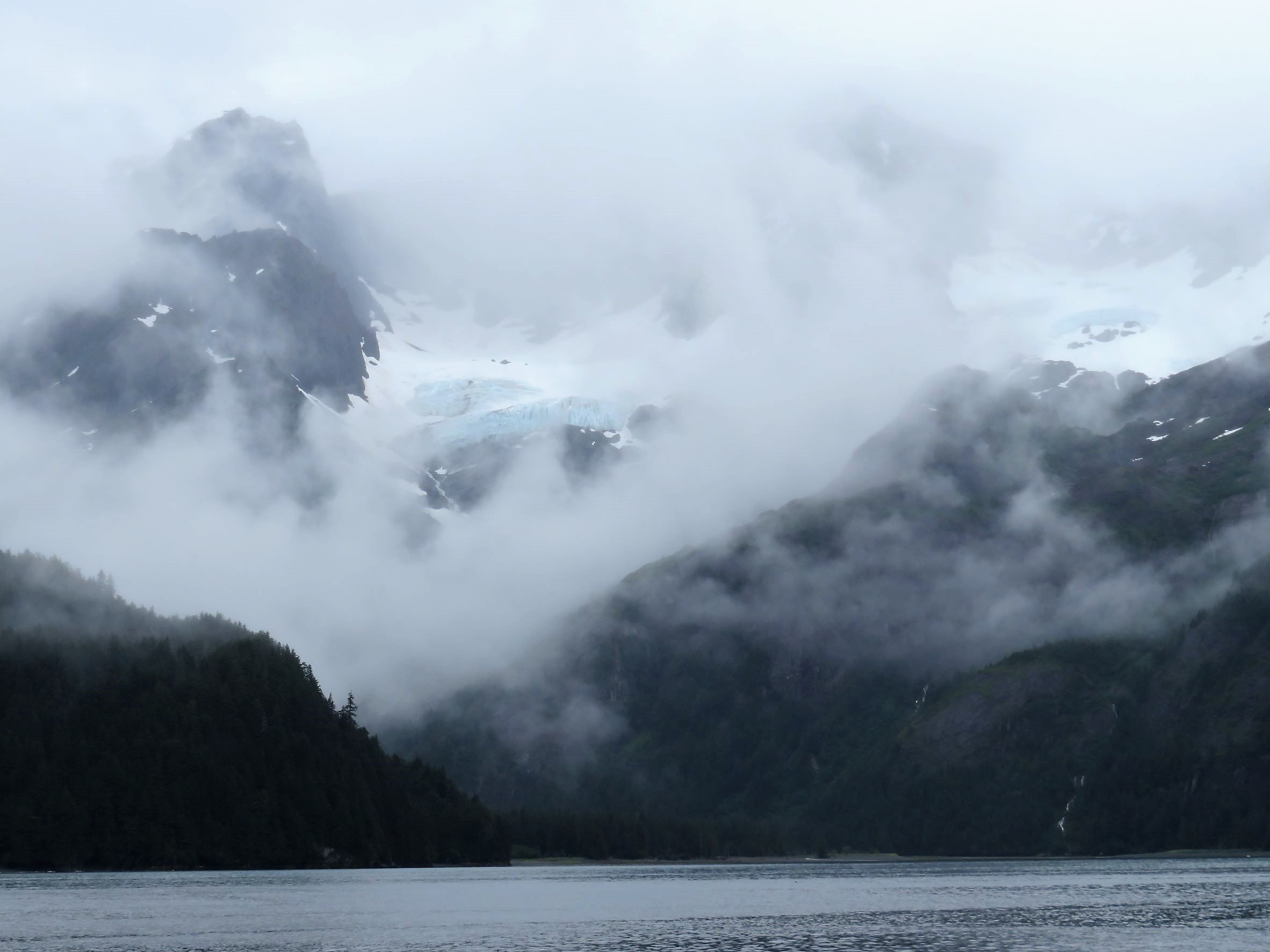

This sea otter had caught an octopus and appeared to be in a food coma!


This area fell 20-30 feet during the 1964 earthquake and the trees are petrified due to soaking up the salt water.
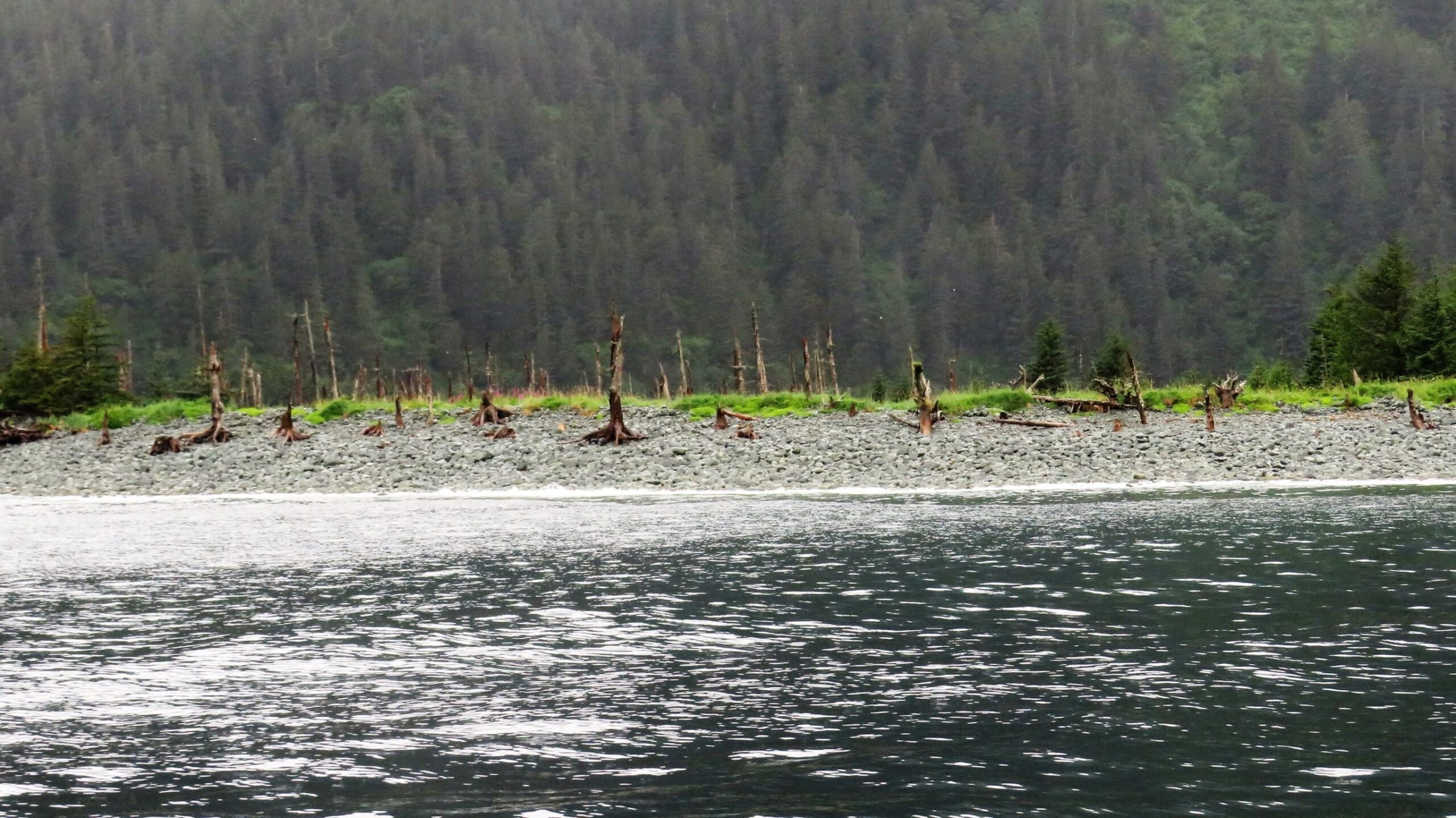
Some Stellar Sea Lions were hanging out on the rocky coast, along with lots of seagulls.



These were basalt rock cliffs – unusual!

We saw lots of waterfalls





We were looking at this waterfall and saw a white speck among the greenery
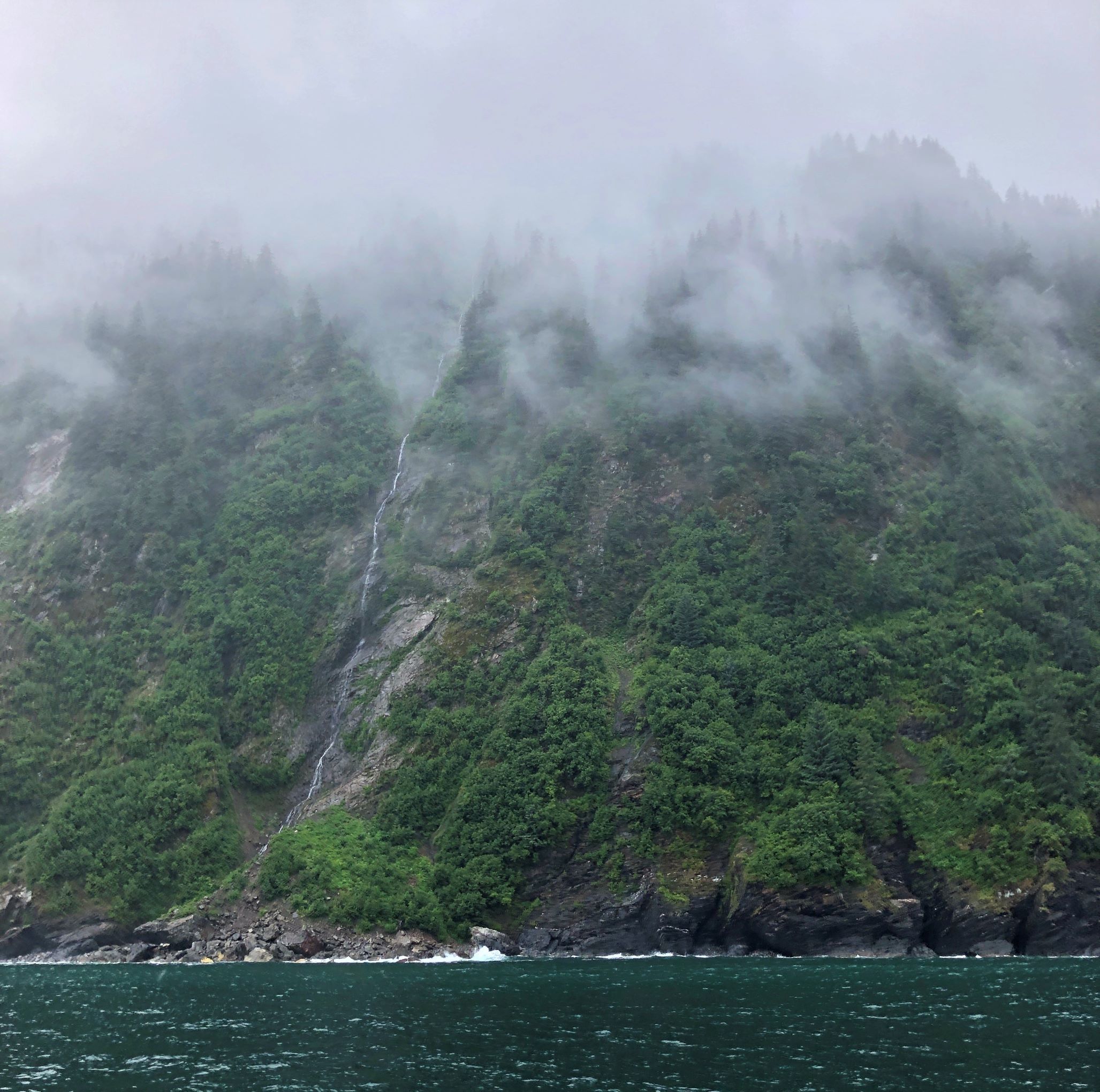

It is a mountain goat!

Unfortunately, it was cold and rainy, and the seas were a bit choppy, but we saw some wildlife, waterfalls and glaciers during our 4-hour cruise.

Afterward, we drove to the Alaska Sea Life Center. We walked past a statue – the Iditarod Trail begins here at Seward!


We had visited the Sea Life Center before (in 2009) and it was fun to come back again. When we arrived, it was time to feed the birds, so we went to watch.





Two Stellar Sea Lions were laid out by the pool looking rather relaxed

The harbor seals could be observed from the top

Or thru glass below — where they looked rather bloated!

The sea stars were colorful – and some had many more than just 5 legs!


There were lots of aquariums with different species of fish and other sea life


A couple of other displays we found interesting; who knew Crater Lake was deeper than Lake Superior?

Glaciers hold 75% of the planet’s fresh water!

Afterwards, we visited Seward Brewing, just across the street from the Sea Life Center, with Lee and Kimberly and sampled several of the brews on tap.

Looking out the window – the rain had stopped, and the skies were clearing up! Go figure!

After our stop at the brewery, we walked down the street to see the waterfall.



Yep – the sky was clearing up!


We returned to the campground and made dinner and got ready to move in the morning.
Monday morning, as we were getting ready to leave the Seward KOA, Jim helped Ryan, Bob and Andrew work on getting Andrew’s back passenger side inside wheel removed so he could get a new tire. (It blew out on the way to Seward on Saturday.)

We left the campground just before 10am with Acey’s mileage at 89,422.3 and Thor’s at 104,68. We headed over to see the Exit Glacier, since it was close by. We were there in 2009 – 13 years ago – so we thought it would be interesting to see how much the glacier had changed since then.
As we drove into the park, there were signs indicating where the foot of the glacier had been in different years. The first one was 1899.



Finally – a sign with the glacier in view!

This board had a photo of the glacier in 2008.

Here is what the glacier looked like when we saw it on July 13, 2009


And here is what we saw today!
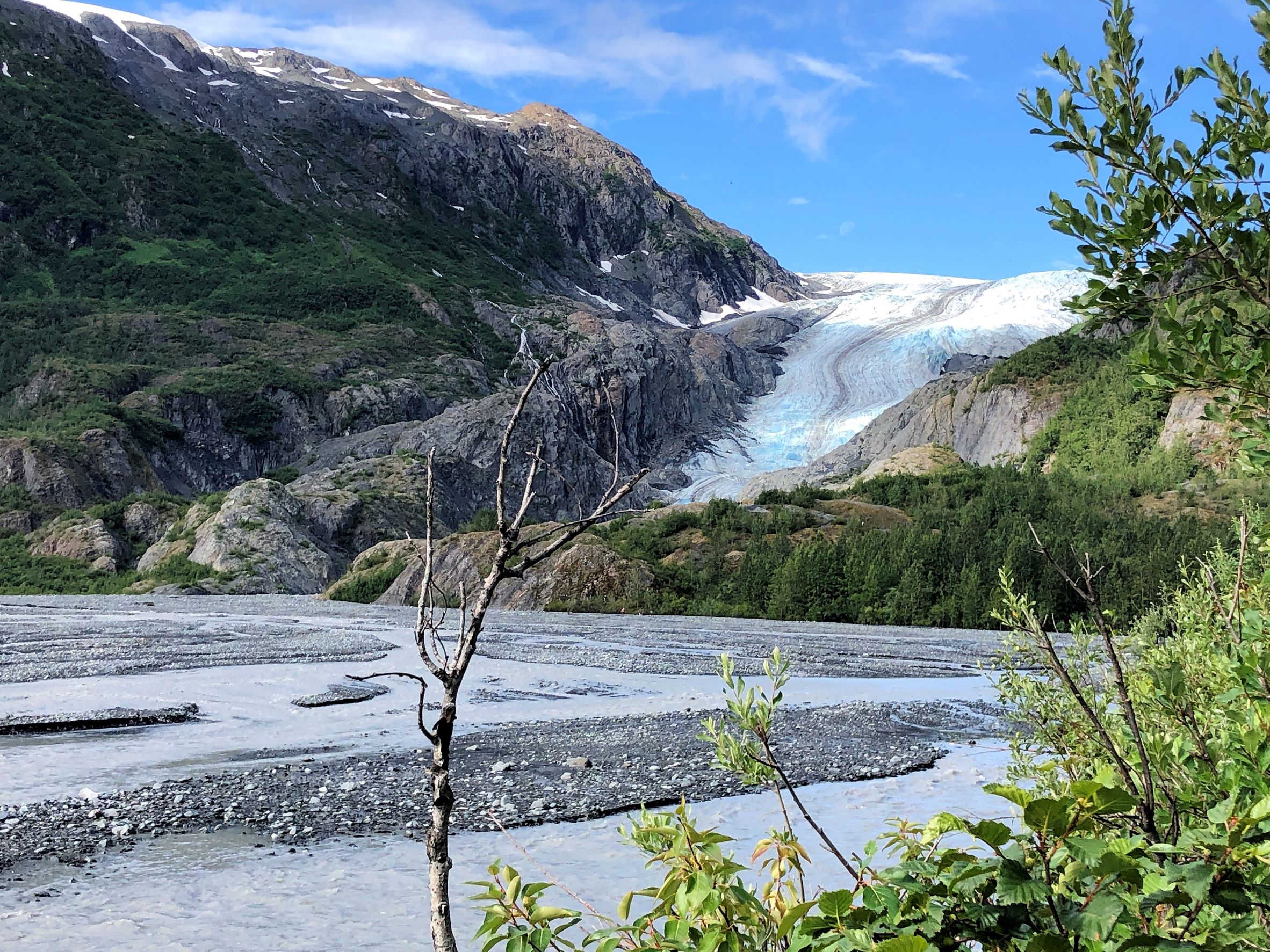
~ ~ ~ 2009 ~ ~ ~

Today

~ ~ ~ 2009 ~ ~ ~



Today


The drive to Anchorage was scenic – Alaska certainly has some beautiful landscape!




We arrived at Golden Nugget Camper Park in Anchorage about 4pm. The spots here are very tight, and Acey stuck out in the road a bit – but at least we have full hookups!

We got a load of laundry done and ran the dishwasher after we got set up. Jim had checked the schedule for the Bore Tide a few days ago — the tide expected this evening was rated “2 surfboards”

After dinner we headed back to Turnagain Arm to view the 8:41pm bore tide. It was cold and very windy when we got to the parking spot. Here’s what the water level looked like at 7:52 – there is a sandbar running down the center of the bay.

Quite a crowd had gathered, in addition to the 10 of us that came from our group. By 8:42 we were all waiting to see the bore tide come in… and we could see a line of foam in the distance heading our way (that doesn’t really show in this photo).

At 8:49, here came the wave of water! Not as big as we had hoped, but there it was!

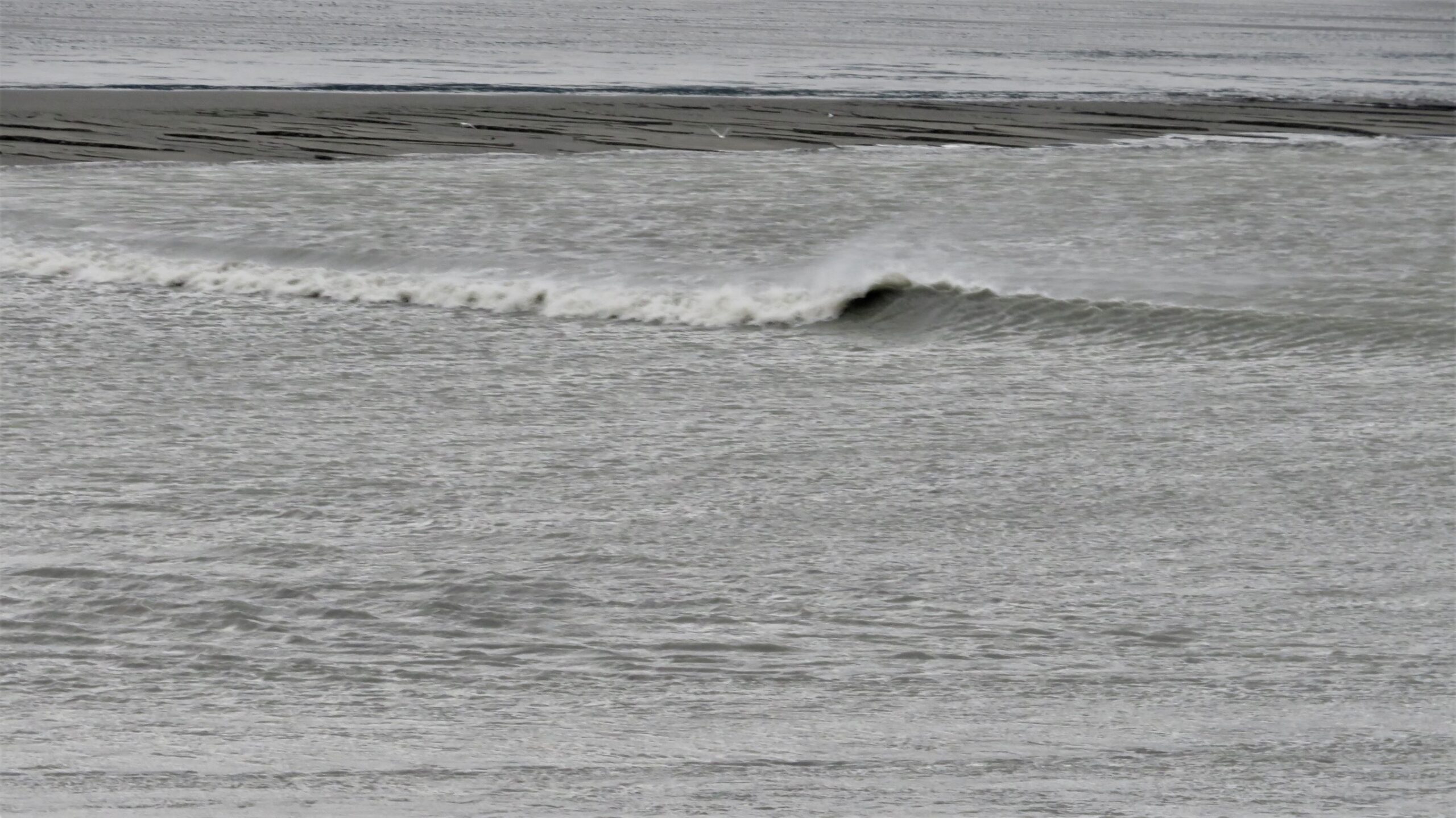
By 8:56 the bore tide had passed, and the water level was slowly coming up.

You can read more about the bore tide here!
Tuesday July 19 was a busy day! Linda was not feeling well, so we went to an Urgent Care Center – just to be sure she didn’t have Covid. Turns out it is a sinus infection, and she got an antibiotic and cough syrup.
After lunch, our group had a tour at the Alaska Native Heritage Center. The Center serves as a statewide resource for Alaska Natives from birth until Elder, supporting and celebrating Alaska Natives from all of Alaska’s Native cultures, including Iñupiaq, St. Lawrence Island Yupik, Athabascan, Eyak, Haida, Tsimshian, Tlingit, Unangax̂, Alutiiq/Sugpiaq, Yup’ik, and Cup’ik.

We had a guided tour but unfortunately, it was cold and rainy again today, and much of what we saw was outside. We visited a couple of “community houses” – many native families would live together in the same home. The men and boys would sleep on the floor to accustom them to the cold, and the women would sleep on benches along the wall. The openings would be made narrow and low to the ground to keep them safe from bears. The opening would actually be lower than this door! About half as tall, requiring one to crawl on hands and knees to get in.

Animal skins and birch bark – and other natural materials were used to make everyday items.

The birch bark pouch (center) was used to hold a baby!

Meat was kept in an elevated box to keep it away from bears and other animals.

There are a lot of uses for seal skins; clothing, covering kayaks, storage bags and more.

Kayak – the frame was made of birch wood and covered with seal skin

Seal skin bag – our guide said it was used “like a ziplock bag”!

Some info about the Yup’ik and Cup’ik people

We went into a “Men’s House”

An underground entrance was used in the winter to help keep the cold out.


Seal intestines were used to cover the skylight…

…and for waterproof jackets – ingenious!

Dog sleds provided transportation in the winter months

Many Native Alaskan tribes hunted whale.

The skeleton of a female grey whale was laid out by the lake – what a huge creature! “…estimated to be 42 feet in length, weighed 33 tons and was approximately 15 years of age”

It’s head alone was over 7 feet long!

These are the lower jawbones from a bowhead whale.

After that, we had a tour on the Anchorage Trolley. Our driver/guide picked us up from the Heritage Center.

Again, the rain was not our friend. We could see out the windows, but really could not take photos from the trolley. Our guide grew up in the Anchorage area and was very familiar with the area and its history. We drove around Kincaid Park, and he told us about the 12-foot-tall moose fences. We drove by the seaplane base where many float planes were parked. We drove by the “underground house” — the home is built on a steep hill overlooking Fish Creek and from the street, all that is seen is the lawn! We went by the railroad depot and Earthquake Park. The 1964 earthquake caused an entire neighborhood of 70 houses to simply disappear! Being that it was Good Friday, most of the residents were at church, and only 7 lives were lost. It was an interesting tour, but no photos… We had a fun day, it’s just too bad we had so much rain!
Wednesday, we head to Denali and more adventures in Alaska!
![]()
Great shots. Good eye on the goat. What precautions the native Alaskans took to avoid bear contact. I especially liked the high meat locker.